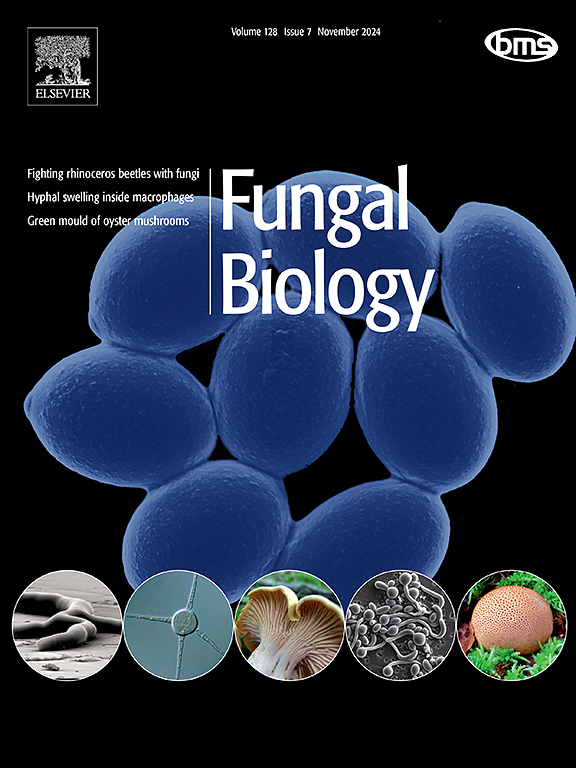Individual peroxiredoxin or Tor pathway components are not required for circadian clock function in Neurospora crassa
IF 3
3区 生物学
Q2 MYCOLOGY
引用次数: 0
Abstract
In many model organisms, the circadian system has been proposed to comprise multiple oscillators that interact to promote accuracy of the clock as well as intricacies of rhythmic outputs. In Neurospora crassa, the circadian transcriptional/translational loop comprising of the FRQ (Frequency) and WCC (White Collar Complex) proteins has been instrumental in explaining many attributes of the clock including entrainment and rhythms in development and gene expression; in addition, some non-circadian oscillations can be unmasked when the FRQ-WCC feedback loop is eliminated. These rhythms have often lost defining circadian characteristics and are potentially controlled by other oscillators, termed FRQ-less oscillators (FLOs) in Neurospora. Understanding the biology of these oscillators and their hierarchical relationship with the FRQ-WCC oscillator (FWO) are salient questions in rhythms research. In this study, we examined candidate FLO effector pathways involving peroxiredoxins (Prxs) and mTOR. We find that independent gene knockouts compromising each pathway do not alter circadian period length or decrease the amplitude of the core circadian FWO rhythm in any meaningful way in Neurospora. Our findings suggest that molecular rhythms in Prx oxidation and in mTOR activity on the chol-1 FLO oscillator are neither required for nor strongly regulate FWO components during a normal circadian day.
粗神经孢子虫的生物钟功能不需要单独的过氧化物还氧蛋白或Tor通路成分
在许多模式生物中,昼夜节律系统已被提出由多个振荡器组成,这些振荡器相互作用以提高时钟的准确性以及节奏输出的复杂性。在粗神经孢子虫中,由FRQ(频率)和WCC(白领复合体)蛋白组成的昼夜节律转录/翻译环在解释生物钟的许多属性方面发挥了重要作用,包括发育和基因表达中的携带和节律;此外,当FRQ-WCC反馈回路被消除时,一些非昼夜节律振荡可以被揭示。这些节律通常失去了明确的昼夜节律特征,并可能受到其他振荡器的控制,这些振荡器在神经孢子虫中被称为FRQ-less振荡器(FLOs)。了解这些振子的生物学特性及其与FRQ-WCC振子(FWO)的层次关系是节奏研究中的突出问题。在这项研究中,我们研究了涉及过氧化物还毒素(Prxs)和mTOR的候选FLO效应途径。我们发现,在神经孢子虫中,影响每个途径的独立基因敲除不会以任何有意义的方式改变昼夜周期长度或降低核心昼夜节律的幅度。我们的研究结果表明,在正常的昼夜节律中,Prx氧化和胆-1 FLO振荡器上的mTOR活性的分子节律既不需要也不强烈调节这两种成分。
本文章由计算机程序翻译,如有差异,请以英文原文为准。
求助全文
约1分钟内获得全文
求助全文
来源期刊

Fungal biology
MYCOLOGY-
CiteScore
5.80
自引率
4.00%
发文量
80
审稿时长
49 days
期刊介绍:
Fungal Biology publishes original contributions in all fields of basic and applied research involving fungi and fungus-like organisms (including oomycetes and slime moulds). Areas of investigation include biodeterioration, biotechnology, cell and developmental biology, ecology, evolution, genetics, geomycology, medical mycology, mutualistic interactions (including lichens and mycorrhizas), physiology, plant pathology, secondary metabolites, and taxonomy and systematics. Submissions on experimental methods are also welcomed. Priority is given to contributions likely to be of interest to a wide international audience.
 求助内容:
求助内容: 应助结果提醒方式:
应助结果提醒方式:


